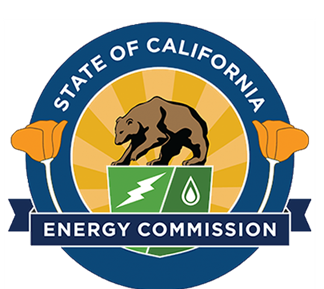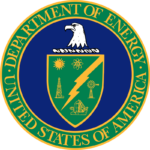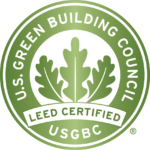[THIS WEBPAGE IS CURRENTLY UNDER DEVELOPMENT]
Sustainable Building, Siting, and Landscaping Guidelines
The Planning, Building and Safety, and Sustainability Divisions of the County of Ventura have provided comprehensive resources for sustainable building, siting, and landscaping practices. The goal is to inform builders, developers, and homeowners with the guidelines and tools needed to create environmentally responsible and resilient structures.
The Planning Division is tasked with enforcing zoning ordinances while implementing the programs and policies outlined in the General Plan, ensuring that land use aligns with sustainable development goals.
The Building and Safety Division upholds the building code, ensuring that construction meets standards for safety, efficiency, and environmental responsibility.
The Sustainability Division promotes renewable energy and advocates for eco-friendly practices. The division also acts as the Ventura County representative in the Tri-County Regional Energy Network (3C-REN).
By integrating expertise from each division, the aim is to promote a whole systems approach to building designs and construction techniques that reduce consumption of non-renewable resources such as oil, gas and water and promote renewable energy use.
Building and Energy Guidelines and Resources
Tri-County Regional Energy Network (3C-REN)

The Tri-County Regional Energy Network, or 3C-REN, supports local climate and sustainability goals for California’s Central Coast. It offers energy-saving programs for residents, building professionals, businesses, and farmers to reduce energy use, save on costs, and foster a resilient community. Programs include energy audits, incentives for home and business improvements, training on energy codes, and support for sustainable practices.
Click here to learn more.
California Energy Commission (CEC) Programs

The California Energy Commission (CEC) is the state’s primary energy policy and planning agency, committed to advancing a 100% clean energy future. The agency focuses on reducing energy costs, minimizing environmental impact, promoting energy efficiency, investing in renewable energy, and ensuring grid reliability. The Commission oversees numerous programs promoting clean energy, energy efficiency, and sustainability across the state. The Commission also supports grid resilience, energy innovation, and collaboration with local governments and tribal organizations. These programs work toward a sustainable energy future through policy, incentives, and technological innovation.
Click here to learn more.
US Department of Energy - Building Technologies Office (BTO)

The Building Technologies Office (BTO) under the U.S. Department of Energy focuses on improving the energy efficiency of buildings. It supports research, development, and deployment of innovative technologies and practices that reduce energy use in residential and commercial buildings. BTO’s initiatives aim to enhance building performance, reduce greenhouse gas emissions, and promote sustainable building practices across the country.
Click here to learn more.
California Green Building Standards Code (CALGreen)

CALGreen, by the California Department of General Services provides information on California’s Green Building Standards Code. CALGreen is the first statewide mandatory green building code in the U.S., setting requirements for energy efficiency, water conservation, indoor air quality, and sustainable building practices. The code applies to residential and nonresidential buildings, aiming to reduce environmental impact and promote healthier living environments.
Click here to learn more.
Solar Friendliness

Ventura County has long promoted solar energy development. In recent years, the Board of Supervisors has furthered this commitment by reducing or waiving permit fees for many solar projects. This dedication led to the county being recognized by the Sierra Club as one of Southern California’s top five “Solar Friendly Communities.”
For detailed information, including the “Executive Summary of Commercial PV Permit Fee Report for Ventura County, 2010” and the California State Fire Marshal’s bulletin on fire classification for roof-mounted solar photovoltaic systems, please visit the Ventura County Resource Management Agency’s website.
Click here to learn more.
Siting Guidelines and Resources
LEEDS Certification

U.S. Green Building Council (USGBC) provides an overview of the LEED (Leadership in Energy and Environmental Design) certification program. LEED is a rating system for the design, construction, and operation of green buildings. It promotes sustainable building practices and provides a framework for healthy, highly efficient, and cost-saving green buildings. The page offers information on how LEED works, its benefits, and how to get involved with LEED certification.
Click here to learn more.
Sustainable Sites Initiative (SITES)

The Sustainable SITES Initiative (SITES) is a program that provides guidelines and certification for designing, constructing, and maintaining sustainable landscapes. It focuses on enhancing ecosystem services, improving resilience, and fostering environmental sustainability in landscapes of all types, including parks, commercial developments, and residential areas. SITES aims to create landscapes that contribute positively to the environment, reduce resource consumption, and provide social and economic benefits.
Click here to learn more.
The Living Building Challenge

The Living Building Challenge (LBC) is a performance standard for sustainable buildings, aiming to create regenerative spaces that are self-sufficient and environmentally beneficial. It focuses on seven performance areas, or “Petals”: Place, Water, Energy, Health & Happiness, Materials, Equity, and Beauty. Projects must meet specific criteria within these areas to achieve certification. The LBC promotes buildings that harmonize with their environment and contribute positively to the health and well-being of their occupants and the planet.
Click here to learn more.
Landscaping Guidelines and Resources
Model Water Efficient Landscape Ordinance

The California Department of Water Resources provides information on the Model Water Efficient Landscape Ordinance (MWELO). This ordinance sets standards for landscape design, installation, and maintenance to promote water efficiency in urban areas. It includes guidelines on plant selection, irrigation practices, and the use of soil amendments to reduce water use while maintaining healthy landscapes. The ordinance aims to help California meet its water conservation goals, particularly in response to drought conditions.
Click here to learn more.
Additionally, the County of Ventura provides MWELO resources that include the application form, definitions, FAQs, and methods. Click here and find the links underneath the Model Water Efficient Landscape Ordinance header.
Water Budget Calculators

The California Department of Water Resources also provides water budget data through the California Natural Resources Agency’s open data platform. The purpose of this dataset is to provide tools and resources that help in calculating water budgets by allowing users to estimate water usage and availability within various regions of California.
Water budget calculators are particularly useful for water managers, policy makers, and researchers looking to model and analyze water consumption patterns, water availability, and the impacts of different conservation or policy decisions on water resources.
Click here to learn more.
Ventura County Gardening

The Ventura County Gardening page on landscaping fundamentals offers detailed guidance on establishing and maintaining a garden in the region. It covers essential topics such as choosing plants suited to the local climate, improving soil health through proper preparation and composting, efficient watering methods tailored to the Mediterranean climate, and strategies for managing pests organically. The site emphasizes sustainable gardening practices, including the use of native plants and water conservation, to create environmentally friendly and resilient gardens.
Click here to learn more.
Ventura County Pollinator-Friendly Landscaping Guidelines

The Ventura County Resource Management Agency’s pollinator brochure provides a comprehensive guide on supporting pollinators in local landscapes. It highlights the critical role of pollinators in ecosystems and agriculture, urging residents to plant native species that attract bees, butterflies, and other pollinators. The brochure outlines best practices for creating pollinator habitats, including minimizing pesticide use, offering water sources, and ensuring year-round flowering plants. It also emphasizes the importance of conserving natural habitats and enhancing biodiversity in urban and rural settings.
Click here to learn more.
Contact Us

John Doe
Program Manager
john.doe@ventura.org
Government Center
Physical Address
800 S Victoria Ave
Ventura, CA. 93009
Phone (000) 000-0000
Quick Links
- Links
- Links
- Links
- Links

